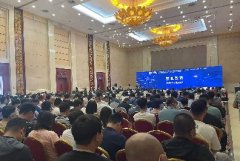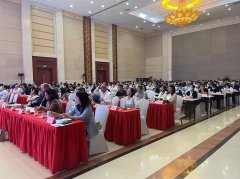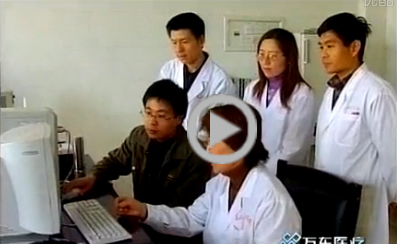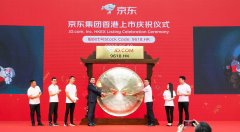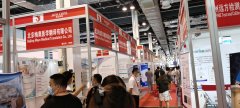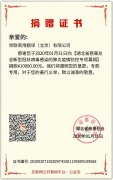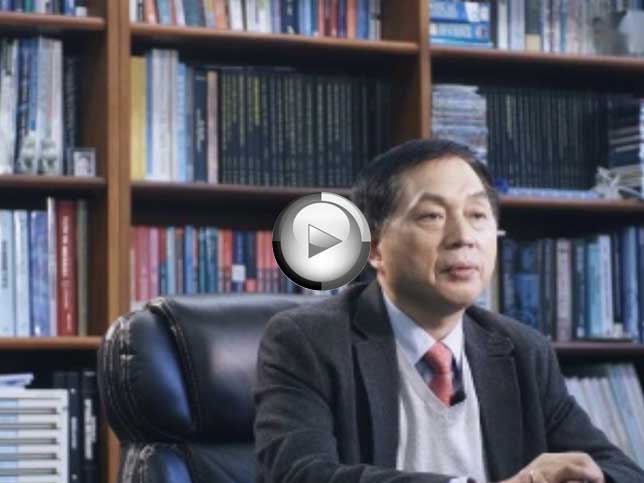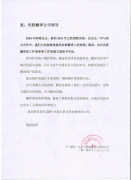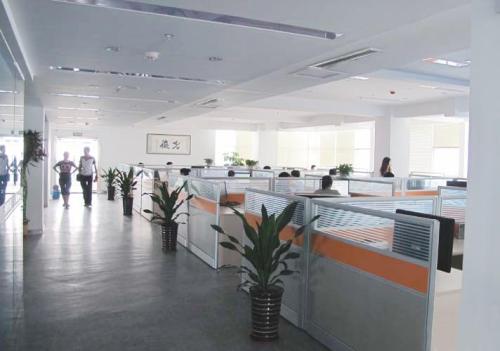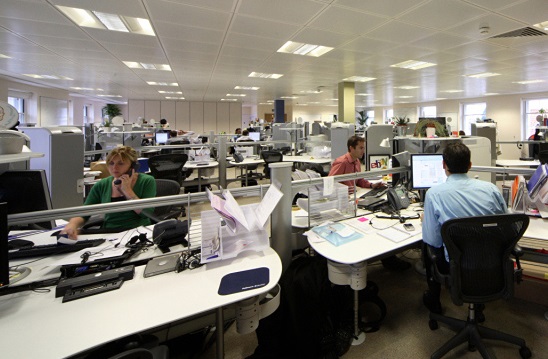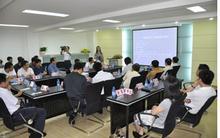上海翻译公司完成医疗器械-血浆过滤器英文翻译
时间:2018-03-06 08:51 来源:未知 作者:dl 点击:次
上海翻译公司完成医疗器械-血浆过滤器英文翻译

INTERNATIONAL STANDARD
ISO 13960
Second edition 2010-07-01
Cardiovascular implants and extracorporeal systems — Plasmafilters
Implants cardiovasculaires et systèmes extracorporels — Filtres pour plasma
© ISO 2010
ISO 13960:2010(E)
COPYRIGHT PROTECTED DOCUMENT
© ISO 2010
All rights reserved. Unless otherwise specified, no part of this publication may be reproduced or utilized in any form or by any means, electronic or mechanical, including photocopying and microfilm, without permission in writing from either ISO at the address below or ISO's member body in the country of the requester.
ISO copyright office
Case postale 56 • CH-1211 Geneva 20 Tel. + 41 22 749 01 11
Fax + 41 22 749 09 47
E-mail copyright@iso.org Web www.iso.org
Published in Switzerland
© ISO 2010 – All rights reserved
ISO 13960:2010(E)
ISO (the International Organization for Standardization) is a worldwide federation of national standards bodies (ISO member bodies). The work of preparing International Standards is normally carried out through ISO technical committees. Each member body interested in a subject for which a technical committee has been established has the right to be represented on that committee. International organizations, governmental and non-governmental, in liaison with ISO, also take part in the work. ISO collaborates closely with the International Electrotechnical Commission (IEC) on all matters of electrotechnical standardization.
International Standards are drafted in accordance with the rules given in the ISO/IEC Directives, Part 2.
The main task of technical committees is to prepare International Standards. Draft International Standards adopted by the technical committees are circulated to the member bodies for voting. Publication as an International Standard requires approval by at least 75 % of the member bodies casting a vote.
Attention is drawn to the possibility that some of the elements of this document may be the subject of patent rights. ISO shall not be held responsible for identifying any or all such patent rights.
ISO 13960 was prepared by Technical Committee ISO/TC 150, Implants for surgery, Subcommittee SC 2,
Cardiovascular implants and extracorporeal systems.
This second edition cancels and replaces the first edition (ISO 13960:2003), which has been technically revised.
This International Standard contains requirements and acceptance criteria (including test methods) for safety related parameters for plasmafilters. Only those requirements that are specific to plasmafilters have been included. Non-specific requirements are covered by references to other International Standards, listed in Clause 2. This International Standard does not cover matters related to toxicity. Such issues are covered in relevant parts of ISO 10993.
Cardiovascular implants and extracorporeal systems — Plasmafilters
1 Scope
This International Standard specifies requirements for sterile, single-use plasmafilters, intended for use on humans.
This International Standard does not apply to the extracorporeal circuits used for plasmapheresis or other extracorporeal blood exchange devices, such as haemodialysers, haemodiafilters, haemofilters, haemoperfusion devices, vascular access devices, oxygenators or active medical devices. This International Standard does not address the replacement fluid.
2 Normative references
The following referenced documents are indispensable for the application of this document. For dated references, only the edition cited applies. For undated references, the latest edition of the referenced document (including any amendments) applies.
ISO 594-2, Conical fittings with 6 % (Luer) taper for syringes, needles and certain other medical equipment — Part 2: Lock fittings
ISO 8637, Cardiovascular implants and artificial organs — Haemodialysers, haemodiafilters, haemofilters and haemoconcentrators
ISO 10993-1, Biological evaluation of medical devices — Part 1: Evaluation and testing within a risk management process
ISO 10993-4, Biological evaluation of medical devices — Part 4: Selection of tests for interactions with blood
ISO 10993-7, Biological evaluation of medical devices — Part 7: Ethylene oxide sterilization residuals
ISO 10993-11, Biological evaluation of medical devices — Part 11: Tests for systemic toxicity
ISO 17665-1, Sterilization of health care products — Moist heat — Part 1: Requirements for the development, validation and routine control of a sterilization process for medical devices
ISO 11135-1, Sterilization of health care products — Ethylene oxide — Part 1: Requirements for the development, validation and routine control of a sterilization process for medical devices
ISO 11137-1, Sterilization of health care products — Radiation — Part 1: Requirements for development, validation and routine control of a sterilization process for medical devices
3 Terms and definitions
For the purposes of this document, the following terms and definitions apply.
3.1
blood compartment
part of plasmafilter through which blood is intended to pass
3.2
filtrate compartment
part of plasmafilter through which filtrate flows
3.3
filtration rate
rate at which fluid is removed from the blood compartment across the semipermeable membrane into the filtrate compartment of a plasmafilter
3.4
plasmapheresis plasma separation
separation of a portion of the whole plasma from formed elements of blood by means of a semipermeable membrane
NOTE Plasmapheresis can also be accomplished through the use of differential centrifugation but this method is not covered by this International Standard.
3.5
plasmafilter
device intended to perform membrane plasmapheresis
3.6
transmembrane pressure TMP
pTM
mean pressure across the semipermeable membrane
NOTE The transmembrane pressure is given by the following equation:
pTM pBI pBO pf
2
where
pBI is the pressure at blood compartment inlet; pBO is the pressure at blood compartment outlet; pf is the pressure at filtrate compartment outlet.
3.7
sieving coefficient
ratio of a solute concentration in the filtrate to the simultaneous concentration of the same solute in blood
4 Requirements
4.1 Biological characteristics
4.1.1 Biocompatibility
Parts of plasmafilters that will come into direct or indirect contact with blood during their intended clinical use shall be biocompatible with respect to their intended clinical use.
Compliance shall be verified in accordance with 5.2.1.
© ISO 2010 – All rights reserved
ISO 13960:2010(E)
4.1.2 Sterility and non-pyrogenicity
Blood and filtrate compartments shall be sterile and non-pyrogenic. Compliance shall be verified in accordance with 5.2.2.
4.2 Physical characteristics
4.2.1 Structural integrity
When tested in accordance with 5.3.1, plasmafilters shall not leak.
NOTE This requirement refers to the external integrity of the devices.
4.2.2 Blood compartment integrity
When tested in accordance with 5.3.2, the blood compartment shall not leak.
4.2.3 Connectors and ports
4.2.3.1 Connections to the blood compartment
Except when plasmafilters and the extracorporeal circuits are designed as an integral system, the dimensions of the blood inlet and outlet connectors of plasmafilters shall be in accordance with ISO 8637.
Compliance shall be verified by inspection.
4.2.3.2 Connection to the filtrate compartment
Except when plasmafilters and their extracorporeal circuits are designed as an integral system, the dimensions of filtrate ports shall be a male 6 % (Luer) taper lock fitting in accordance with ISO 594-2 or dialysis fluid inlet and outlet port in accordance with ISO 8637. Connectors made of semi-rigid materials shall not separate under an axial force of 15 N for 15 s.
Compliance shall be verified by inspection.
4.2.3.3 Volume
When measured in accordance with 5.3.3, the volumes of the blood compartments of plasmafilters shall be within the range of values stated by the manufacturer [see 6.2 d)].
4.2.3.4 Pressure drop
When measured in accordance with 5.3.4, the pressure drop across the blood compartment of the plasmafilter shall be within the range of values stated by the manufacturer [see 6.2 h)].
4.3 Performance characteristics
4.3.1 Filtration rate
When measured in accordance with 5.4.1, the filtration rate shall be within the range of values stated by the manufacturer [see 6.2 g) 1)].
ISO 13960:2010(E)
4.3.2 Sieving coefficient
When measured in accordance with 5.4.2, the sieving coefficients for albumin, immunoglobulin M (IgM) and beta lipoprotein or equivalent indicators shall be within the range of values stated by the manufacturer [see 6.2 g) 2)].
4.3.3 Non-haemolytic characteristics
The device shall not cause haemolysis that represents a safety hazard to patients when tested at the maximum specified operating conditions. Testing shall be in accordance with 5.4.3.
5 Methods
5.1 General
Carry out the tests and measurements below with the device under test prepared according to the manufacturer's instructions for the intended clinical use.
Unless otherwise stated below, use the pressures and flow rates stated by the manufacturer for the intended clinical use and conduct tests with the test liquids at (37 1) °C. If the relationship between variables is non-linear, make sufficient determinations to permit valid interpolation between data points.
The test systems shown do not indicate all the necessary details of practicable test apparatus. The design and construction of actual test systems and the establishment of actual test systems shall also address the many factors contributing to measurement error, including, but not limited to, pressure measurement errors due to static head effects and dynamic pressure drops; parameter stabilization time; uncontrolled temperature variations at the non-constant flow rates; pH; degradation of test substances due to heat, light and time; degassing of test fluids; trapped air and system contamination by foreign material, algae and bacteria.
The test methods below are reference methods. Other methods may be used, provided they have been shown to be of comparable precision and reproducibility.
5.2 Methods for assessment of biological characteristics
5.2.1 Biocompatibility
Compliance shall be verified by test or by inspection of the manufacturer's documentation on biocompatibility, in accordance with ISO 10993-1, ISO 10993-4 and ISO 10993-7, as relevant.
5.2.2 Sterility and non-pyrogenicity
Verify compliance, as relevant, in accordance with ISO 10993-11, ISO 17665-1, ISO 11135-1 and ISO 11137-1. Alternatively, compliance with the requirement for sterility can be verified by inspection of the records to show that the device has been exposed to a validated sterilization process.
5.3 Methods for assessment of physical characteristics
5.3.1 Structural integrity
Fill the device under test with water and raise the pressure to 1,5 the maximum stated by the manufacturer [see 6.2 c)]. Maintain this pressure for approximately 10 min and visually inspect the device for any emergence of water (leaks).
© ISO 2010 – All rights reserved
ISO 13960:2010(E)
5.3.2 Blood compartment integrity
Set up the filter in the vertical position. Close off the bottom filtrate and blood ports. Wet the membrane with water and fill the filtrate compartment, if appropriate. Pressurize the blood compartment with air to 1,5 the maximum transmembrane pressure specified by the manufacturer for a period of 10 min. If no bubbles exit the filtrate compartment, through the open filtrate port, the blood compartment is intact.
5.3.3 Volume
The volume of the blood compartment shall be calculated from geometrical data (volume of headers, fibre dimensions and the number of fibres). Compliance is checked by inspection of the manufacturer's documentation.
NOTE The volume is calculated as described above since it might prove difficult to find a liquid that will not be filtered through a plasmafilter membrane.
5.3.4 Pressure drop
5.3.4.1 Test liquid
The test liquid shall be anticoagulated bovine or human blood, with sustained levels of a hematocrit value of (32 3) % and protein content of (60 5) g/l.
5.3.4.2 Procedure
Fill the filtrate compartment with saline or plasma and the blood compartment with the test fluid. Measure the pressure drop across the blood compartment over the manufacturer's stated range of blood flow rates.
5.4 Performance characteristics
5.4.1 Filtration rate
5.4.1.1 Test liquid
The test liquid shall be anticoagulated bovine or human blood, with sustained levels of a hematocrit value of (32 3) % and protein content of (60 5) g/l.
5.4.1.2 Procedure
Set up a test circuit as shown in Figure 1. Do not allow the priming pressure to exceed the maximum transmembrane pressure stated by the manufacturer [see 6.1 g)]. Make measurements of plasma flow rates with the test liquid circulating through the blood compartment of the device under test and in sequence of measurement from minimum to maximum transmembrane pressure at each blood flow rate stated by the manufacturer [see 6.2 c)].
5.4.2 Sieving coefficient
5.4.2.1 Test liquid
The test liquid shall be bovine or human plasma with a protein content of (60 5) g/l and containing one or more of the following substances or equivalent indicators:
a) albumin (present as plasma albumin);
b) immunoglobulin M (IgM);
c) beta lipoprotein.
NOTE Further substances/indicators or whole blood can be used.
Key
1 plasma pump
2 chamber
3 device under test
4 blood pump
5 test liquid at (37 1) °C
pBI is the pressure of blood at the inlet of the device under test.
pBO is the pressure of blood at the outlet of the device under test.
pf is the pressure of the filtrate at the outlet of the device under test.
Figure 1 — Schematic test circuit for determination of the filtration rate and sieving coefficient
5.4.2.2 Procedure
Set up a test circuit as shown in Figure 1. Measure the protein content of the test liquid and record this value. Set the test liquid flow rate to the maximum blood flow rate stated by the manufacturer [see 6.3 b)] and the filtration rate to at least 20 % of the test liquid flow rate. If, for device related reasons, the stated test liquid flow rate cannot be achieved, use the maximum possible rate and record the rate used.
Collect test samples after steady state has been reached (typically after 30 min of blood contact). Measure the concentration of the protein in the filtrate. The measurements should be repeated at a second time point (typically after 90 min of blood contact) to evaluate membrane fouling.
Calculate the sieving coefficient, S, using the following equation:
S cF
cBI
where
cF is the concentration of a solute in the filtrate;
cBI is the concentration of a solute at the inlet of the device under test.
© ISO 2010 – All rights reserved
ISO 13960:2010(E)
5.4.3 Test procedure for non-haemolytic characteristics
5.4.3.1 Test liquid
The test liquid shall be anticoagulated bovine or human blood, with sustained levels of a hematocrit value of (32 2) % and protein content of (60 5) g/l.
5.4.3.2 Procedure
Circulate the test liquid for 30 min using a transmembrane pressure/blood flow rate of the maximum values specified by the manufacturer. During this period, visually inspect the filtrate for the presence of blood. Measure free haemoglobin in the blood and filtrate at the beginning and end of the procedure. The change in level should be within the manufacturer's specifications.
6 Information provided by the manufacturer
6.1 Information to be placed on the plasmafilter
The plasmafilter shall contain the following information, as applicable, where symbols may be substituted for text, as shown in ISO 7000 and ISO 15223-1:
a) the name of the manufacturer;
b) the batch, lot or serial number designation;
c) a statement that the device is sterile and the method of sterilization;
d) the model designation;
e) the expiry date, stated as mm/yyyy or yyyy/mm;
f) a statement of single use;
g) the maximum transmembrane pressure;
h) the direction of blood flow, if necessary (colour coding can be used);
i) any special handling or storage conditions;
j) a warning that the device is intended only for use in plasma separation.
6.2 Information to be given in the accompanying documents
Each transport container shall contain an instruction leaflet. The following data, as applicable, shall be given with relevant tolerances:
a) the manufacturer's name and address;
b) the proprietary device name;
c) the specified ranges for blood flow rate and pressures, including transmembrane pressure;
d) the volume of the blood compartment;
e) the membrane surface area of the plasmafilter;
f) the generic names of materials of construction of the plasmafilter intended for direct or indirect contact with blood;
g) performance characteristics, i.e.:
1) filtration rates for the stated range of blood flows and transmembrane pressures;
2) sieving coefficients for albumin, immunoglobulin M (lgM) and beta lipoprotein;
NOTE Where possible, this information should be displayed using graphs of a sufficient size to permit interpolation values. Further substances/indicators, such as total cholesterol, can be used.
h) the pressure drop across the blood compartment;
i) the haemolysis generated during testing performed in accordance with 5.4.3.2;
j) a statement that the following information is available from the manufacturer upon request:
1) information about test methods used to obtain performance characteristics;
2) clinical performance characteristics;
k) the directions for setting up the plasmafilter, including the recommended priming and rinsing procedures and maximum transmembrane pressures;
l) the recommended procedures for termination of a treatment;
m) a typical circuit diagram, including the direction of fluid flows;
n) the recommendations on anticoagulation;
o) the method of sterilization.
6.3 Information to be given, as applicable, in a prominent form in the accompanying documents
a) the pressure limitations;
b) the blood flow rate limitations;
c) the importance of adhering to the manufacturer's instructions for rinsing;
d) a list of significant adverse reactions;
e) a list of general and specific contra-indications.
© ISO 2010 – All rights reserved
ISO 13960:2010(E)
Bibliography
[1] ISO 7000, Graphical symbols for use on equipment — Index and synopsis
[2] ISO 13485, Medical devices — Quality management systems — Requirements for regulatory purposes
[3] ISO 15223-1, Medical devices — Symbols to be used with medical device labels, labelling and information to be supplied — Part 1: General requirements上海翻译公司完成医疗器械-血浆过滤器英文翻译
世联翻译-让世界自由沟通!专业的全球语言翻译供应商,上海翻译公司专业品牌。丝路沿线56种语言一站式翻译与技术解决方案,专业英语翻译、日语翻译等文档翻译、同传口译、视频翻译、出国外派服务,加速您的全球交付。
世联翻译公司在北京、上海、深圳等国际交往城市设有翻译基地,业务覆盖全国城市。每天有近百万字节的信息和贸易通过世联走向全球!积累了大量政商用户数据,翻译人才库数据,多语种语料库大数据。世联品牌和服务品质已得到政务防务和国际组织、跨国公司和大中型企业等近万用户的认可。 |





